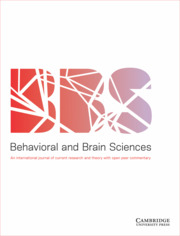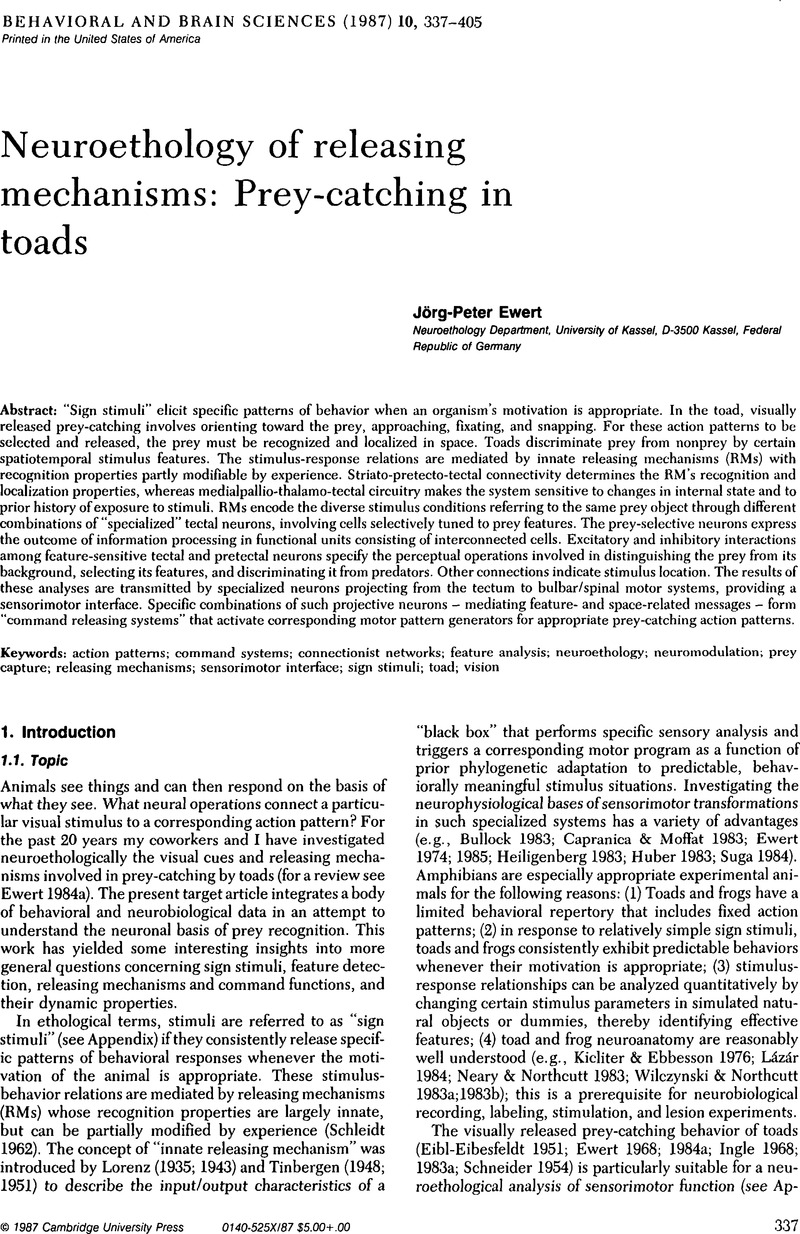Crossref Citations
This article has been cited by the following publications. This list is generated based on data provided by Crossref.
Alexander, Garrett E.
1992.
For effective sensorimotor processing must there be explicit representations and reconciliation of differing frames of reference?.
Behavioral and Brain Sciences,
Vol. 15,
Issue. 2,
p.
321.
Zipser, David
1992.
Systematic, idiosyncratic reaching errors.
Behavioral and Brain Sciences,
Vol. 15,
Issue. 2,
p.
353.
Blouin, J.
Teasdale, N.
Bard, C.
and
Fleury, M.
1992.
The mapping of visual space is a function of the structure of the visual field.
Behavioral and Brain Sciences,
Vol. 15,
Issue. 2,
p.
326.
Cruse, H.
and
Dean, J.
1992.
What do pointing errors really tell us about internal coordinate transformations?.
Behavioral and Brain Sciences,
Vol. 15,
Issue. 2,
p.
333.
Neilson, Peter D.
1992.
Coordinate transformations or dynamic models?.
Behavioral and Brain Sciences,
Vol. 15,
Issue. 2,
p.
348.
Adamovich, S. V.
1992.
How does the nervous system control the equilibrium trajectory?.
Behavioral and Brain Sciences,
Vol. 15,
Issue. 4,
p.
704.
Powers, William T.
1992.
S-O-R: Wrong model for pointing.
Behavioral and Brain Sciences,
Vol. 15,
Issue. 2,
p.
349.
Worringham, Charles J.
and
Dennis, Robert G.
1992.
Distance errors: Pointing to the range effect.
Behavioral and Brain Sciences,
Vol. 15,
Issue. 2,
p.
352.
Lan, Ning
and
Crago, Patrick E.
1992.
Equilibrium-point hypothesis, minimum effort control strategy and the triphasic muscle activation pattern.
Behavioral and Brain Sciences,
Vol. 15,
Issue. 04,
p.
769.
Massone, Lina L. E.
1992.
Coordinate transformations: Some basic questions.
Behavioral and Brain Sciences,
Vol. 15,
Issue. 2,
p.
345.
Hayward, Vincent
1992.
Physical modeling applies to physiology, too.
Behavioral and Brain Sciences,
Vol. 15,
Issue. 2,
p.
342.
Flanders, Martha
Tillery, Stephen I. Helms
and
Soechting, John F.
1992.
Early stages in a sensorimotor transformation.
Behavioral and Brain Sciences,
Vol. 15,
Issue. 2,
p.
309.
Stein, J. F.
1992.
The representation of egocentric space in the posterior parietal cortex.
Behavioral and Brain Sciences,
Vol. 15,
Issue. 04,
p.
691.
Hasan, Z.
1992.
Is stiffness the mainspring of posture and movement?.
Behavioral and Brain Sciences,
Vol. 15,
Issue. 04,
p.
756.
Gandevia, S. C.
and
Burke, David
1992.
Does the nervous system depend on kinesthetic information to control natural limb movements?.
Behavioral and Brain Sciences,
Vol. 15,
Issue. 4,
p.
614.
Soechting, John F.
Tillery, Stephen I. Helms
and
Flanders, Martha
1992.
In the dark about pointing: What's the point?.
Behavioral and Brain Sciences,
Vol. 15,
Issue. 2,
p.
354.
Burnod, Yves
and
Caminiti, Roberto
1992.
Cortical mechanisms of visuomotor transformations underlying arm movements to visual targets.
Behavioral and Brain Sciences,
Vol. 15,
Issue. 2,
p.
332.
Gordon, J.
Ghilardi, M. F.
and
Ghez, C.
1992.
In reaching, the task is to move the hand to a target.
Behavioral and Brain Sciences,
Vol. 15,
Issue. 2,
p.
337.
Ostry, D. J.
Flanagan, J. R.
and
Sergio, L. E.
1992.
Coordinate transformations in orofacial movements.
Behavioral and Brain Sciences,
Vol. 15,
Issue. 2,
p.
348.
Bullock, Daniel
Greve, Douglas
and
Guenther, Frank
1992.
Do reaches in the dark shed sufficient light on internal representations?.
Behavioral and Brain Sciences,
Vol. 15,
Issue. 2,
p.
330.



